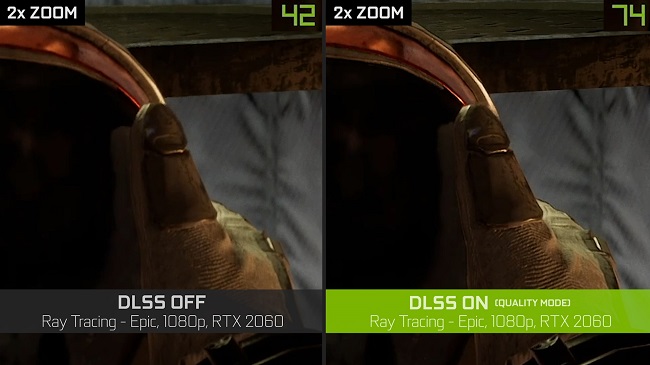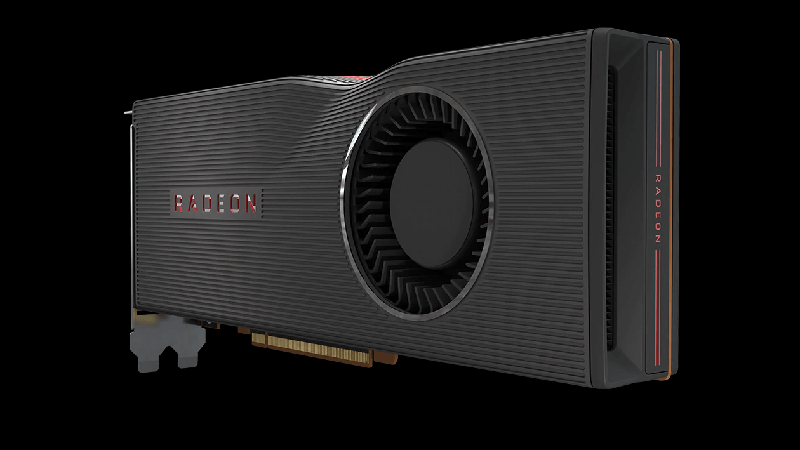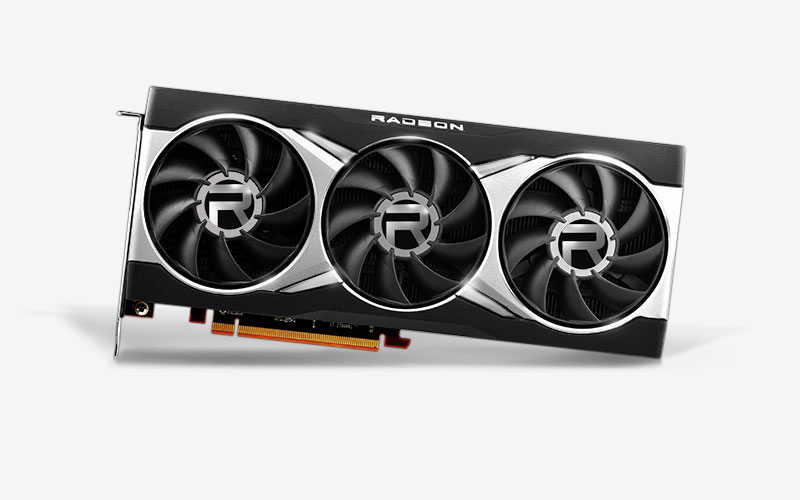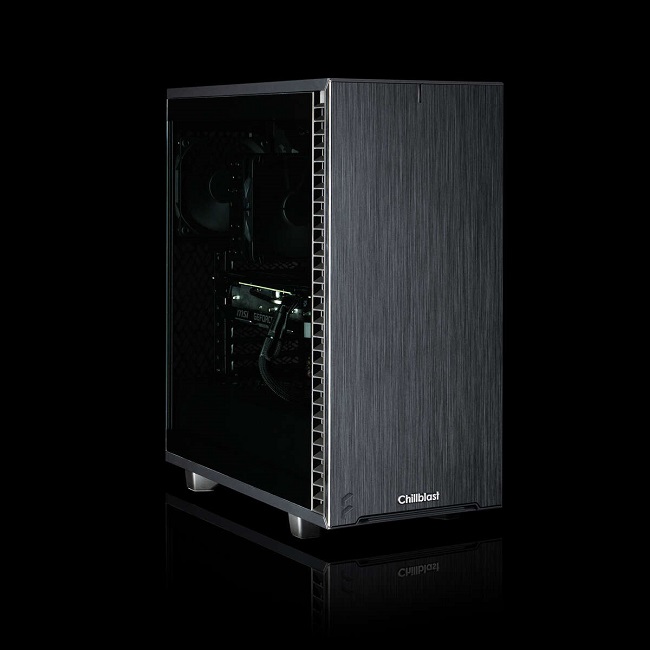FidelityFX Super Resolution, or FSR, is AMD’s answer to Nvidia’s deep learning super sampling, otherwise known as DLSS.
While AMD’s recent RDNA 2 generation of RX 6000 graphics cards is just as fast as Nvidia’s best, and finally offers real-time ray tracing support, its lack of a DLSS equivalent means even the super powerful top-tier cards can’t compete in supporting titles.
FidelityFX Super Resolution is designed to fix that.
FSR may go far further than bringing Radeon cards to feature and performance parity with Nvidia’s latest RTX models, though.
If the rumours are anything to go by, it could become the dominant form of dynamic upsampling and anti-aliasing, giving people across the entire spectrum of GPU ownership the option of improving performance and visual quality with just the toggle of a switch.
What is FidelityFX Super Resolution?

FidelityFX Super Resolution is a software feature that dynamically improves the perceived resolution of a game, without the typical demand of rendering it natively at that resolution.
As an example, it should make a game rendered at 1080p look more like 1440p, or a 1440p game look closer to 4K, all while maintaining a higher frame rate than if the game was truly rendered at that higher resolution.
This opens up a number of potential options for gamers.
It could let them play at higher resolutions than their hardware is typically capable of; game at higher frame rates at the same perceived resolution as they normally would, or enable a greater array of visual features, like ray tracing, without impacting performance as much.
This goes way beyond any previous FidelityFX image enhancement technologies like Contrast Adaptive Sharpening, but could be used in conjunction with FidelityFX ambient occlusion, screen-space reflections, and denoising, to further enhance the visuals in supporting games.
FSR vs DLSS

Deep Learning Super Sampling and FidelityFX Super Resolution are two technologies that are designed to do a very similar job.
The former, introduced by Nvidia with its RTX 2000 series of Turing graphics cards, helped pioneer the very concept of post-processing dynamic upscaling. It has shown that not only is it possible to improve performance dramatically using the technology, but that it can do it without major visual artefacts – DLSS 2.0 was a big improvement over its original incarnation.
It also enables high-resolution gaming with ray tracing at frame rates that just wouldn’t be possible otherwise.
DLSS uses machine learning to train an algorithm to recognize scenes in a game at ultra-high resolutions, so when the game is run at a lower resolution using DLSS, it can infer what the game should look like at greater resolutions. The algorithm fills in the blanks and uses anti-aliasing to smooth out the edges.
This process is accelerated using on-die Tensor cores, giving a higher perceived resolution, while retaining the performance of rendering at a lower one.
FSR will have the same kind of results, but AMD’s Scott Herkelman recently stated that it doesn’t use machine learning to do it. He also claimed that where AMD is currently behind Nvidia on ray tracing performance, he believes that FidelityFX Super Resolution will level that playing field.
If that isn’t too aggressively optimistic, it would suggest that FSR may even be a more effective tool than DLSS in raising performance.
FidelityFX Super Resolution Could Work On Older Cards Too

The greatest strength of FSR, though, might be that it doesn’t require dedicated hardware. It will require some use of the general compute pipeline, so though the net performance result should be positive, it will work better on higher-end cards.
But it could work on lower-end cards and not just those from the latest RX 6000-generation, either. It should be possible for at the very least, RDNA GPUs like the RX 5700 XT, 5700, 5600 XT and 5500 XT to use FSR to improve their in-game performance.
It may even be possible for older cards, like the popular RX 580 and 570 to use FSR too.
There has even been some suggestion that FSR’s lack of a need for dedicated hardware could even make it compatible with Nvidia’s graphics cards (both RTX and GTX) and would include cards that cannot use DLSS due to lacking the onboard tensor cores.
Since FSR would need to be enabled by game developers on a per-game basis, making such a thing possible would be a smart move by AMD to encourage developers to utilize FSR over DLSS, as it would mean they wouldn’t have to support both – simplifying that aspect of the developmental process.
According to AMD’s Herkelman, making FSR easy for developers to use in their games without a major overhaul of their engine, was a big aim of FidelityFX Super Resolution’s development, and it’s been broadly successful in that endeavour.
That could be one more reason that developers could opt to make use of FSR over DLSS, if they don’t use both.
When is FidelityFX Super Resolution launching?

FidelityFX Super Resolution isn’t available just yet and AMD hasn’t made any firm announcement about when it will appear, although sometime in 2021 was always the suggested launch window.
That was a move welcomed by gamers and developers alike, as early versions of DLSS weren’t particularly well-received. It was seen as AMD’s way of making sure FSR was ready to launch with a range of supporting games and without the visual artefacts seen in early DLSS implementations.
That said, the latest rumours suggest that FSR may launch as soon as June 2021.
The Coreteks YouTube channel reported that FSR was already up and running with some game developers, both big and small. That’s a little sooner than some expected and seems to counter the idea that AMD wanted to wait until it was super polished.
There was also some suggestion that FSR could launch on the new-generation consoles at the same time as PC – another reason that many thought it would appear later in 2021.
But June is the latest date to hit the rumour mill, and if true, means FSR could be out in the wild in short order. If not, the Autumn seems like a possible alternative.
What games support FSR?

AMD has yet to release a list of supporting games for FSR and though there are a number of reports of developers big and small testing the feature in their games, no one has come out and definitively stated that they will use it in their games.
4A Games recently stated that it wouldn’t be adding FSR to the enhanced edition of Metro Exodus, but then later claimed that it hadn’t evaluated it. It could be that they were referring instead to AMD’s Contrast Adaptive Sharpening (CAS), or that AMD has since provided them with a better version of FSR to evaluate with their game.
Either way, it’s not clear what the status of FSR is with Metro Exodus: Enhanced Edition.
Part of the reason AMD has been waiting as long as it has to launch FSR is to get a decent library of supporting games together for the launch. DLSS still only has around 30 supporting games, almost three years on from its debut.
AMD has been working closely with a number of developers on various FidelityFX features and implemented CAS, HDR mapping, and advanced Freesync features in games like Resident Evil Village, GodFall, and Cyberpunk 2077.
With around 40 games supporting some measures of the FidelityFX toolset, it seems likely that we’ll see a good number also supporting FSR when it becomes available.
What do you need to use FSR?

The open nature of FidelityFX Super Resolution means that it should work on a broad range of hardware.
You’ll need a relatively modern graphics card to make the most of it, with the range of hardware to support it most likely being AMD’s recent generations of RDNA and RDNA 2 graphics cards.
That said, it’s quite possible that FSR will be perfectly usable on older GPUs too, like AMD’s Radeon RX Vega 56 and 64, and perhaps even Polaris based RX 590, 580, and 570 cards. There’s even a chance that FSR will support Nvidia graphics cards, though that has yet to be confirmed.
If you’re looking to build a new gaming PC to take advantage of FSR, then you’ll run into similar problems with anyone trying to build a gaming PC for any reason in 2021: standalone graphics cards are almost impossible to find.
Even older GPUs are priced way outside of what they should be, and finding them new is incredibly unlikely.
You can join waiting lists, or pre-order a card in hopes that it will show up a few months from now, but if you want a gaming PC to take advantage of FSR as soon as it releases, your best bet is to buy a pre-built gaming PC.
Chillblast offers a number of custom gaming PCs with AMD Radeon graphics that will 100% support FidelityFX Super Resolution when it becomes available, and are priced far more fairly than if you were to try to buy a GPU by itself or through scalpers on auction sites.
What are the best graphics cards for FidelityFX Super Resolution?

FSR will likely support a wide range of graphics cards and could help even low-end GPUs uplift their performance, helping them hit playable frame rates at higher resolutions than those GPUs were ever designed for – especially in games released many years after their release.
While we still don’t know which GPUs FSR will officially support, the safest bet is that it will be supported by the latest-generation RX 6000 series, and will certainly work best on those cards, no matter how many other generations of cards, from AMD or Nvidia, are also supported.
The Chillblast Fusion Ryzen 7 RX 6700 XT gaming PC comes equipped with the most affordable of AMD’s RX 6000 GPUs, offering fantastic performance within a few percentage points of the Nvidia RTX 3070, or last-generation kingpin, the RTX 2080 Ti. It supports ray tracing and when FSR becomes available, it should be much better at handling it in games that support both technologies.
That won’t be the absolute best graphics card for FSR, though.
For a few hundred pounds more you can upgrade that PC (or build a custom one) with an RX 6800 XT, one of the best graphics cards ever made. It’s noticeably more powerful than the RX 6700 XT, hitting high frame rates in games at both 1440p and 4K.
With its near-double Compute Units, the 6800 XT is likely to have a significantly greater performance boost from FSR, too.
For the ultimate FidelityFX Super Resolution performance improvement, the 6900 XT is going to be king. It’s a lot more expensive than even the 6800 XT, but it offers the best likelihood of delivering the greatest gains in games that support FSR. Especially when ray tracing is also an option.
Will FSR make DLSS redundant?
When deep learning super sampling was first announced, it was with muted excitement.
Its potential was clearly there to help new-generation graphics cards hit the kind of performance targets they had in games with ray tracing, but severe visual artefacts made it less than ideal.
Since then it’s come on leaps and bounds, and the improved performance with a new generation of RTX 3000 cards, has reinvigorated it as a feature that shows a real difference in capability between the latest Nvidia and AMD graphics cards.
But it’s still only available in around 30 games, with a handful of extra ones announced.
FSR promises to be almost, if not as good, as DLSS in terms of visual quality and performance without the need for dedicated hardware. That would make it easier for developers to implement, and potentially open it up to a wider array of hardware, including the Xbox One X/S and PS5.
If it ends up in more games and more people can use it, it seems likely that FidelityFX Super Resolution will become the upscaling technology of choice for just about everyone.
That may not kill off DLSS entirely, but FSR could make it a marginal tech for a diminishing group of Nvidia GPU owners who play very specific games.
Are you looking forward to AMD’s FidelityFX Super Resolution? Let us know in the comments below!






